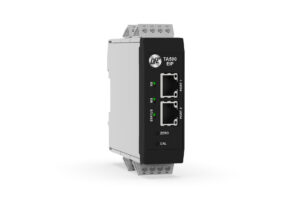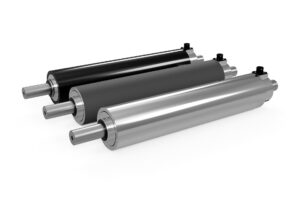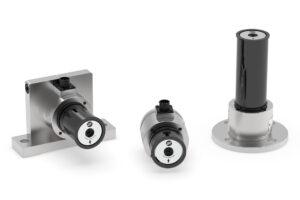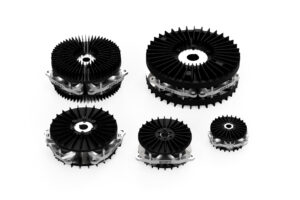Battery Separator Manufacturing Tension Control
Improve quality and reduce waste in battery separator manufacturing with precise, automatic tension control.
In battery separator manufacturing a variety of processes may be employed including film extrusion, machine directional orientation (MDO), treating, coating, laminating, drying and slitting.
In battery construction, the separator is a permeable membrane that divides the cathode and anode (electrode) components of a battery. Many separator designs exist and their properties can directly impact rates of ion transfer through an electrolyte as influenced by temperature. As a result, different separator technologies can affect the level of thermal stability, performance and life span a battery will experience. Thermal stability directly impacts the safety of battery cells, so it is important to prevent any defects and imperfections that can contribute to hazardous events such as thermal runaway which can result in fire or explosion.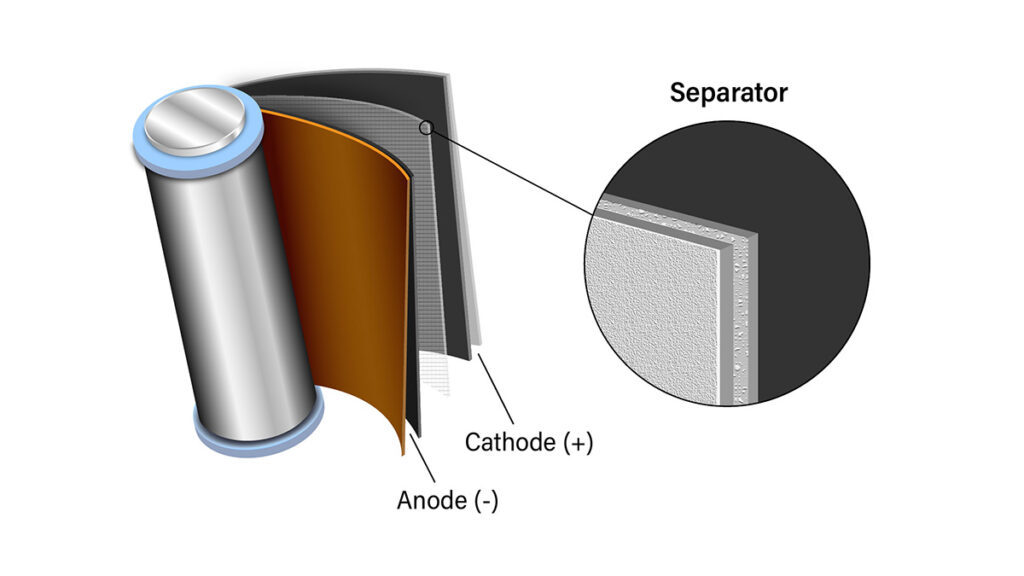 Modern separator designs such as those used in Li-ion battery production vary in composition. Some designs consist of porous polyethylene membranes sandwiched between polypropylene layers. Other designs may employ a combination of modified PE membranes layered together with nanoparticle composite. Some separators have coatings applied to influence properties such as strength, dimensional stability and temperature resistance.
Modern separator designs such as those used in Li-ion battery production vary in composition. Some designs consist of porous polyethylene membranes sandwiched between polypropylene layers. Other designs may employ a combination of modified PE membranes layered together with nanoparticle composite. Some separators have coatings applied to influence properties such as strength, dimensional stability and temperature resistance.
The successful management of tension at each step of a separator’s manufacture is crucial. Depending on the separator design, a closed-loop tension controller system utilizing load cell (transducer) feedback may be required at multiple stages of production. Discrete tension zones for each operation help to ensure optimum tension set points can be maintained based on the properties of the material as it transits the process.
For example, a zone where coating and drying takes place may require less tension than a zone where the material is trimmed to it’s final width. In that scenario the slitting zone should be isolated to ensure slitting tension remains consistent and is not influenced by the taper tension program used during final wind-up onto rolls.
DFE offers the highest quality tension sensing transducers and controllers to achieve top performance in battery separator manufacturing in unwind, rewind and process zones.
Typical battery separator tension control solutions incorporate:
• A closed-loop tension controller such as the SteadyWeb™ 6
• A load cell such as the Tension Roll® Transducer
• A Pneumatic Brake, Magnetic Particle Brake, Clutch or Motor Drive System
Customers integrating tension control with a PLC most often utilize:
• A load cell signal amplifier such as the TA1 TrueTension™ Amplifier
• A load cell such as the Tension Roll® Transducer, a pair of convertible load cells such as the Model C Series Transducers or Under Pillow Block Transducers such as the Model F Series
Do you have a similar tension application that you would like to discuss?
Complete the form below and a DFE Applications Engineer will contact you shortly.
DFE does not share information with 3rd party advertisers.


